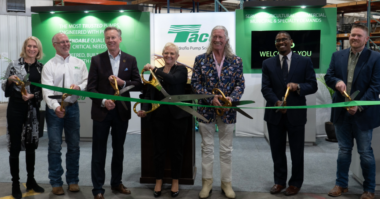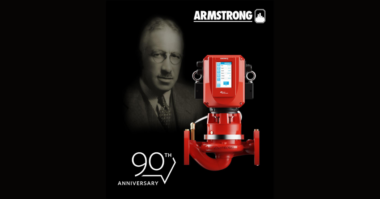Author: Rick Smith, Co-Founder and CEO, Fast Radius
We’ve seen the rise and fall of consumer hype around 3D printing, but does the pump industry realize the real potential provided by additive manufacturing? In a presentation I made at a Hydraulic Institute meeting back in February, I spoke about why 3D printing technology is so disruptive to current manufacturing technologies. 3D printing offers two things that mass production does not – customization and complexity.
3D printing enables manufacturers to take intricate designs from their engineers’ minds and physically produce geometries that cannot be made any other way. These complex parts can be created in a fraction of the time than traditional methods allow, and in some cases, can be created at a more competitive cost. How has this impacted industrial manufacturing?
Rapid prototyping has become even faster, helping companies save a significant amount of time and money developing products and getting them to market more quickly. Beyond prototyping, 3D printing has enabled manufacturers to perform A/B tests on physical products. Ford® Motor Company, for instance, is not only 3D printing engine molds in just 4 days’ time, they are making numerous versions to test simultaneously; giving them an avenue to perfect their product. 3D Printing is ushering in an era of true product innovation. A great example is the new General Electric jet engine fuel injection system, which GE began 3D printing about two years ago. Instead of manufacturing and assembling 21 separate components, they 3D printed a single part that ended up being five times stronger and increased fuel efficiency by 15%; resulting in fuel savings of over $1M per year for every single airplane that uses the new system. If 3D printing enabled GE to redesign their parts to improve efficiency, just think what the pump industry can do with additive manufacturing.
Conventional manufacturing requires pump OEMs to create tooling and molds to produce parts. In the past, design engineers had to change their most optimal pump designs due to the limitations of the manufacturing process. Molds often took weeks to create, they were not precise, and many complex profiles just couldn’t be created. With industrial 3D printing, there is no additional incremental cost for complexity, so pump engineers can design pumps and parts with highly specialized geometries that can support manufacturers’ efforts to improve overall equipment efficiencies.
Another advantage of 3D printing is that costs are not tied to the number of units produced. There is no price penalty for producing pump parts in very small quantities. This presents advantages for low-volume production, mass customization (especially in the case of producing impellers), and on-demand spare part production.
Additive manufacturing will have the biggest impact for on-demand spare parts production because replacement parts are not always available. There are many old pumps that have been operating for 30 or 40 years; and when these obsolete pumps need to be repaired or rebuilt, spare parts can be hard to find. In many cases, the design files may no longer be available. Luckily, today’s technology enables manufacturers to scan those parts, improve upon them using sophisticated software, and then the manufacturer can produce the pump parts in one of two ways – either the part can be 3D printed or a low-volume mold can be printed and used to produce the part. The 3D printed mold can be used at a foundry to cast a limited number of parts – say 5, 10, or 20 impellers, for example. While this does not provide the manufacturer with a precision casting, it offers a cost effective option for creating a small amount of pump parts.
As the cost continues to drop and the quality continues to rise, 3D printing will inevitably overtake more and more of mass production. One of the fastest growing areas in the manufacturing sector is the 3D production of functional end-use parts. A Price Waterhouse Cooper survey conducted in 2014 found that 11% of manufacturing companies polled had already transitioned to volume production of 3D printed parts. This is not a technology to be overlooked by the pump industry. Industrial 3D printing will forever change the world as we know it, and it will be interesting to see how industrial manufacturers will take advantage of the opportunities offered by additive manufacturing.
For more information about industrial 3D printing, visit www.fastradius.com.
About Fast Radius
Co-founded by Mitch Free and Rick Smith, Fast Radius is a global leader in on-demand parts manufacturing with cutting edge 3D plastic and metal printing technologies, CNC machining and rapid injection molding capabilities, and external production capacity from select global providers. Read the UPS Press Release to learn more about the On-Demand 3D Printing Manufacturing Network.
About the Author
Rick Smith is the CEO and Co-founder of Fast Radius, an on-demand production company that utilizes industrial 3D printing, CNC machining and other advanced technologies. He is also the author of two national best-selling books, as well as the forthcoming book The Great Disruption; Competing and Surviving in the Second Wave of the Industrial Revolution, which will be published in October 2016.





Comments